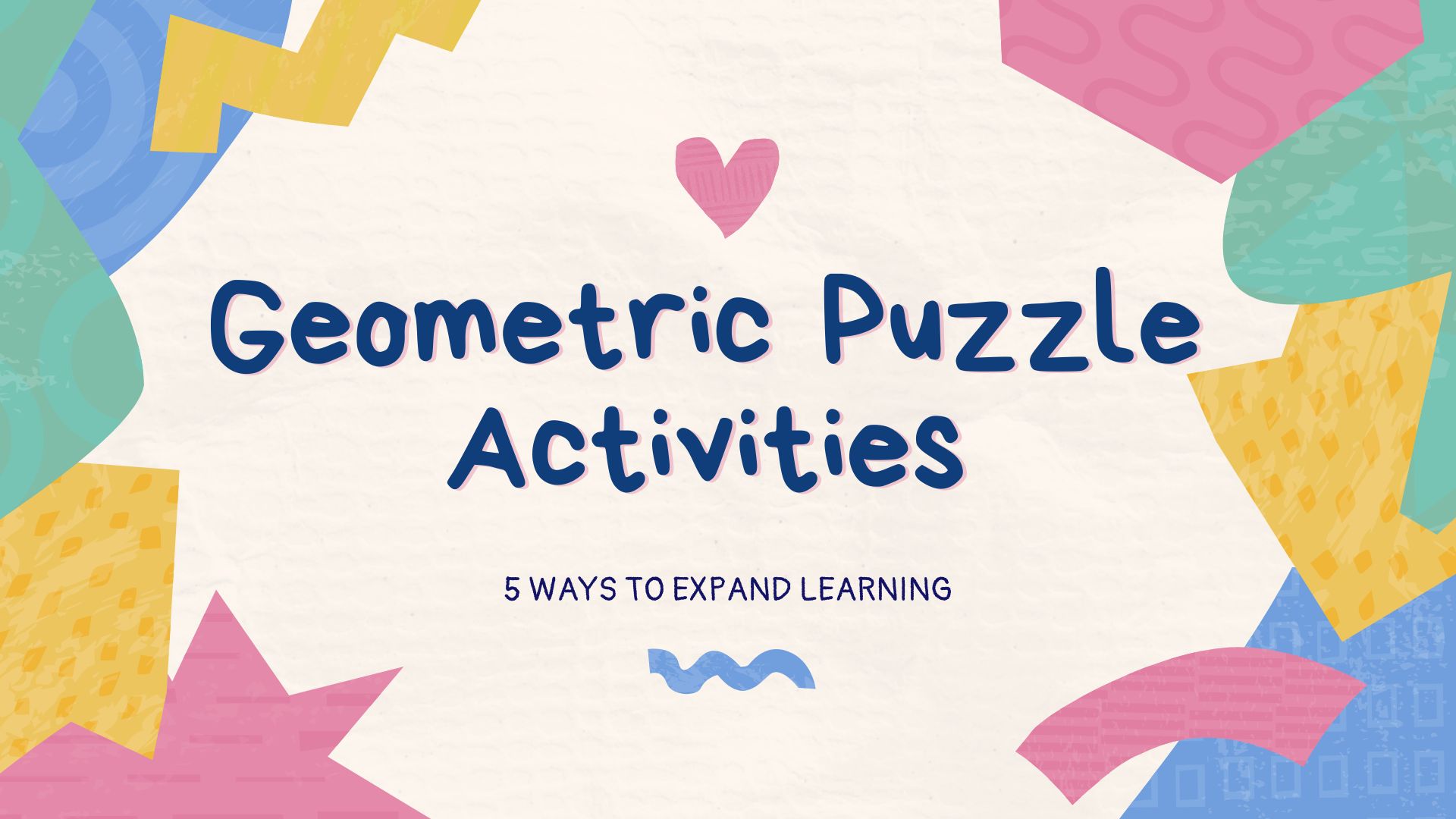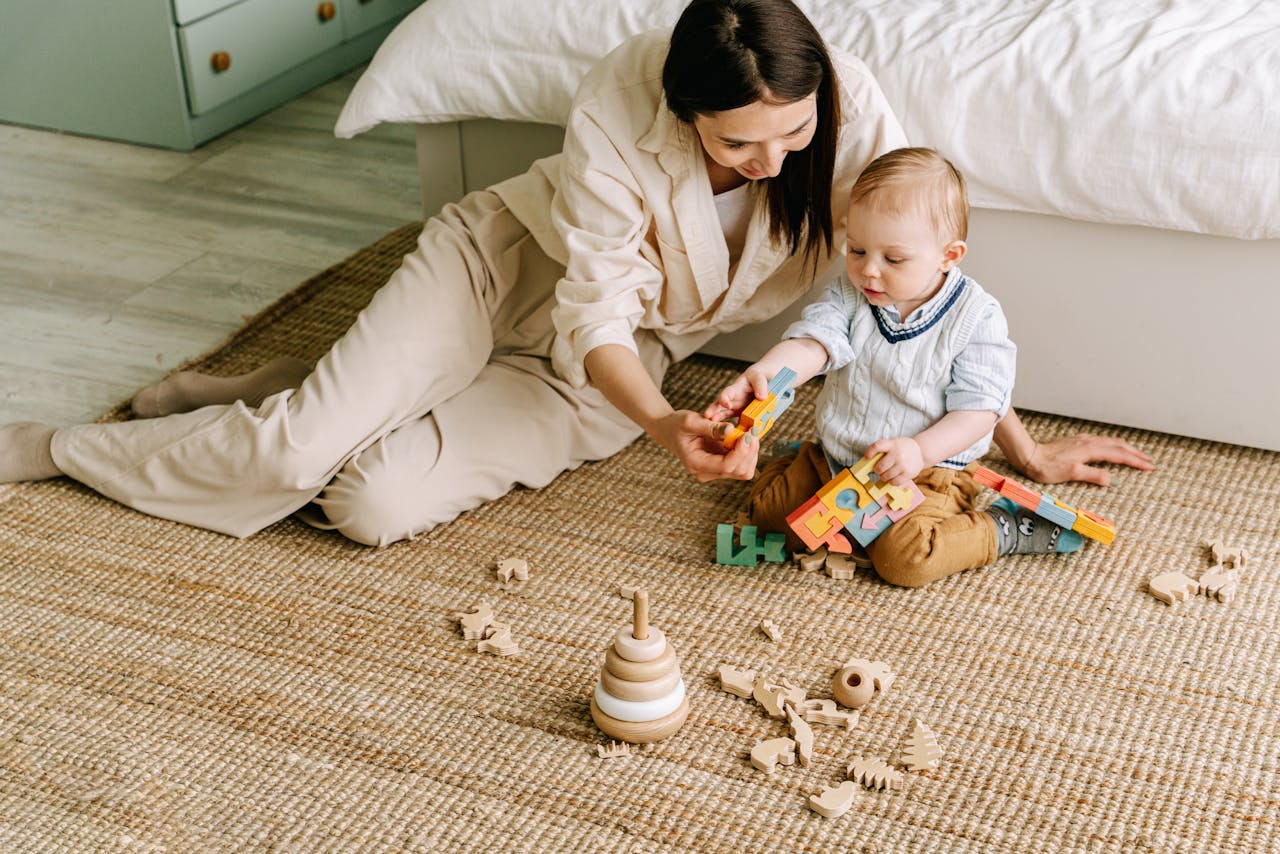🧩 Why Geometric Puzzles Are More Than Just Toys
Geometric puzzles offer more than quiet time or motor skill practice — they’re a gateway to early maths, spatial reasoning, and problem-solving.
But after your toddler has placed every shape into its matching spot… then what?
That’s where geometric puzzle activities come in. With just a few extra prompts or materials, you can transform one puzzle into a week’s worth of engaging learning experiences.
Here are 5 simple, Montessori-inspired ideas that build on your puzzle and extend the benefits far beyond the board.
✋ Activity #1: Shape Sorting Beyond the Board
What you’ll need:
- Your geometric puzzle pieces
- A few small containers, bowls, or trays
How to play:
Remove all the shapes from the puzzle and scatter them on a play mat. Ask your toddler to sort the shapes by type, colour, or size — placing each into a separate container.
Skills developed:
- Classification and early data organisation
- Visual discrimination
- Fine motor control
Bonus idea: Sort by number of sides (e.g. triangles, squares) and introduce simple geometry language like “corner” or “side.”
🎨 Activity #2: Tracing and Drawing Shapes
What you’ll need:
- Paper, crayons or pencils
- Geometric puzzle pieces
How to play:
Have your child place a shape on paper and trace around it. Then let them colour inside or decorate it freely.
Skills developed:
- Shape recognition
- Early writing mechanics
- Creativity and spatial planning
Bonus idea: Label each shape and introduce uppercase letters that share similar angles (e.g. triangle = “A”, square = “E”).
🔄 Activity #3: “What’s Missing?” Shape Memory Game
What you’ll need:
- Puzzle board and all the shape pieces
- A small cloth or tea towel
How to play:
Place all the shapes in the puzzle. Then, while your toddler looks away, remove one shape and cover the spot with the cloth. Ask, “Which shape is missing?”
Skills developed:
- Working memory
- Attention to detail
- Visual recall
Bonus idea: Take turns — let your toddler be the one to remove a shape for you to guess.
🧠 Activity #4: 3D Shape Hunt Around the House
What you’ll need:
- Puzzle pieces
- A small basket for collecting real-world items
How to play:
Show your toddler a puzzle shape (like a circle or triangle), then go on a scavenger hunt to find objects that match it in real life — a coin for a circle, a cracker for a square, etc.
Skills developed:
- Shape generalisation
- Real-world visual literacy
- Language development
Bonus idea: Snap a photo of each match and create a shape “book” to revisit later.
🧩 Activity #5: Layered Shape Stacking Challenge
What you’ll need:
- Puzzle pieces
- Stacking rings, cups, or other small items
How to play:
Challenge your toddler to stack items on top of matching shapes — place a coin on a circle, a block on a square, and so on.
Skills developed:
- Hand-eye coordination
- Shape-to-function association
- Balancing and patience
Bonus idea: Time them! See how many they can stack in one minute (great for slightly older toddlers).
💡 Why These Activities Matter
Each of these activities turns your puzzle into a multi-use learning tool — one that promotes:
- Independent thinking
- Repetition with variation
- Movement and curiosity
- Cross-subject learning (math, art, problem-solving)
Rather than buying more toys, these extensions encourage deeper play with what your child already has.
📸 See These Ideas in Action
Want to see how other families are using Frankie & Leo puzzles in creative ways?
Follow us on Instagram for ideas, setups, and toddler-tested extensions:
👉 @frankiexleo on Instagram
🛒 Featured Toy: The Geometric Puzzle by Frankie & Leo
Our Montessori-inspired geometric puzzle features:
- Clean, simple shapes
- Soft, calming colours
- Developmentally appropriate sizing for toddler hands
Designed to grow with your child, it’s a core piece for extending learning through imaginative play.
👉 Explore the Geometric Puzzle Now
📚 Reference:
Clements, D. H., & Sarama, J. (2009). Learning and Teaching Early Math: The Learning Trajectories Approach. Routledge.


